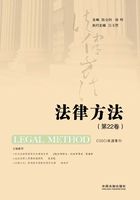
六、结论
尽管这些年来,对论题的使用已经越来越少,这篇文章意在引起人们对论题之实用价值的注意。正如我们所争论的,有时候,我们是“只见树木,不见森林”。在论证理论方面,我认为,我们同样也已经忽略了如何处理诸如论证的定位和建构等问题。发现和提出论证似乎很简单,但是对于大多数学生和专业人士而言,论证是令人沮丧的,令人畏惧的,复杂的和无法逾越的。对于定位论证和建构论证而言,论题是非常重要的。然而,它们不仅仅是前提和结论的连接(建构论证),或者是论证的发现(定位论证)。它们同样可以帮助我们的批判性思维能力和论证教学工作。此外,了解论题在当代的论证理论中是如何帮助构建和定位论证,将会使我们做得更好。因为它能帮助我们去揭露论证中更为深层次的意义,它们帮助我们更为成功的教授论证,它们帮助我们更为快速和有效的形成论证,它们帮助我们去依靠和增强当代的论证理论,它们帮助我们去识别和理解论证,它们帮助我们更为有效的,以更有成效的方式去评价和反驳论证,因此,论题是极为有用的和重要的。
我已经讨论了在当代论证理论中,使用论题的至少四个好处:定位论证,建构论证,发展批判性思维能力,和教授论证和辩论。在这些和其他的方面,论题应该被重新发现并作为有用的工具,来改善论证的教学。正如我在讨论教学时所描述的,对于所有的起步或高级的论证者而言,论题使论证教学变得简化。对论题的使用,可以使我们去面对任何与论证指导相关的任务。当我们向学生宣传我们的课程,或向教学管理员讨论教学时,即便是使用我们自己的论题,都将会产生巨大的影响。简而言之,论题对于我们的教学方法将会有非常重要的意义。
在一个比以往任何时候有更为较少的学生去学习论证的同时,但是任何一个人又同样需要比以往任何时候去学习论证的时代,通过遗忘论题系统,我们短期的改变了自己。如果我们想要将学生吸引到课程上来,提升公民的批判性思维能力,将我们非常重要的努力同普通人和管理者联系起来,我们必须不能忘记我们是如何到达我们现在所在的地方的。我们必须不能忘记我们是如何定义,定位以及花费我们的生活去探索和论证。我们必须不能忘记亚里士多德写作《修辞学》的第一位的、主要的原因是:为了提供一个可用的指导使论证易于操作,以至于任何人都可以练习修辞学。论题帮助我们记住了论证的这些非常重要的方面。
[1]本文系江苏省普通高校学术学位研究生创新项目《可废止性:法律方法的一个分析视角》(项目编号:KYZZ16_0433)的阶段性成果。
[2]约瑟夫·佐佩蒂(J.P.Zompetti),美国伊利诺伊州立大学教授。研究领域为:论证、修辞和公民参与。他所教授的课程通常涉及到修辞理论、修辞批判、市民参与与社会行动等方面。此文发表于《论证》,2006年第20期,15~28页。此文的翻译已经获得作者的书面授权。
[3]高伟伟,男,江苏扬州人,南京师范大学法学院博士生,研究方向为法律论证。
[4]Braet,A.C,The Oldest Typology of Argumentation Schemes,18 Argumentation,2004,pp.127~148.
[5]Ochs,D.J,The Tradition of the Classical Doctrines of Rhetorical Topoi,PhD Dissertation,University of Iowa,1966.
[6]Id.
[7]Kienpointner,M,On the Art of Finding Arguments:What Ancient and Modern Masters of Invention Have to Tell us About the“Ars Inveniendi”,11 Argumentation,1997,pp.225~236.
[8]Vancil,D.L,Historical Barriers to a Modern System of Topoi,43 Western Journal of Speech Communication,1979,pp.26~37.
[9]Perelman,C.and L.Olbrechts-Tyteca,The New Rhetoric:A Treatise on Argumentation,Notre Dame:University of Notre Dame Press,1969.
[10][译者注]:拉丁文loci是locus的复数形式。指的是位置或地点。对佩雷尔曼和奥尔布雷希特·泰特卡关于loci的探讨的检验可以参见如下二手资源:Frans Hendrik van Eemeren,Fundamentals for Argumentation Theory:A Handbook of Historical Backgrounds and Contemporary Developments,Mahwah:Erlbaum,1996;Wallace,K.R,Topoi and the Problem of Invention,58 Quarterly Journal of Speech,1972,pp387~395.
[11]Perelman,C.and L.Olbrechts-Tyteca,The New Rhetoric:A Treatise on Argumentation,Notre Dame:University of Notre Dame Press,1969,p85.
[12]Ochs,D.J,The Tradition of the Classical Doctrines of Rhetorical Topoi,PhD Dissertation,University of Iowa,1966.
[13]Id.at 1.
[14]Id.at 43.
[15]Id.at 45.
[16]Kienpointner,M,On the Art of Finding Arguments:What Ancient and Modern Masters of Invention Have to Tell us About the“Ars Inveniendi”,11 Argumentation,1997,pp.225~236.
[17]De Pater,W.A,La fonction du lieu et de l’instrument dans les Topiques,in G.E.L.Owen(ed.),Aristotle on Dialectic:The Topics,Oxford:Oxford University Press,1968,pp.164~188.
[18]Kienpointner,M,On the Art of Finding Arguments:What Ancient and Modern Masters of Invention Have to Tell us About the“Ars Inveniendi”,11 Argumentation,1997,pp.225~236.
[19]Walton,D,Argumentation Schemes for Presumptive Reasoning,Lawrence Erlbaum,Mahwah,NJ,1996.
[20]Eemeren,F.H.van,R.Grootendorst and F.S.Henkemans,Fundamentals of Argumentation Theory:A Handbook of Historical Backgrounds and Contemporary Developments,Lawrence Erlbaum,Mahwah,NJ,1996.
[21]Id.at 38.
[22]为了了解更多的关于“在论证中的语言”,(同样被人知晓的“在语言内的论证”)的讨论,包括论题和语义学之间的关系问题,请参见Raccah,P.Y,Modelling Argumentation and Modeling with Argumentation,4 Argumentation,1990,pp.447~483.Varzi,A.C,An Essay in Universal Semantics,Dordrecht:Kluwer,1999.
[23]Jost,W,Teaching the Topics:Character,Rhetoric,and Liberal Education,21 Rhetoric Society Quarterly,1991,p.1~16.
[24]Fahenstock,J.and M.Secor,The Rhetoric of Literary Criticism,in Bazerman Charles and Paradis James,(ed.),Textual Dynamics of the Professions:Historical and Contemporary Studies of Writing in Professional Communities,Madison:University of Wisconsin Press,1991,pp.76~96.
[25]Miller,C,Aristotle's‘special Topics’in Rhetorical Practice and Pedagogy,17 Rhetoric Society Quarterly,1987,pp.61~70.
[26]Rieke,R.D.and M.O.Sillars,Argumentation:Critical Decision Making,New York:Harper Collins,1993,pp.25~26.
[27]Solmsen,F.,Die entwicklung der Aristotelischen Logic und Rhetorik,4 Neue Philogische Untersuchungen,1929,p.164.
[28]Aristotle,Aristotle on Rhetoric:A Theory of Civic Discourse,Kennedy,George A.(trans),New York:Oxford University Press,1991,p.214.
[29]Aristotle,The Rhetoric of Aristotle,Lane Cooper(trans),New York:Appleton Century Crofts,1932,p.158.
[30]Hill,B.and R.W.Leeman,The Art and Practice of Argumentation and Debate,Mayfield:Mountain View,CA,1997,p.165.
[31]Smith,R,Aristotle:Prior Analytics,Indianapolis:Hackett,1989;McAdon,B,Probabilities,Signs,Necessary Signs,Idia,and Topoi:The Confusing Discussion of Materials for Enthymemes in the Rhetoric,36 Philosophy and Rhetoric,2003,p.223~248.
[32]Aristotle,Aristotle on Rhetoric:A Theory of Civic Discourse,Kennedy,George A.(trans),New York:Oxford University Press,1991,pp.190~204.[译者注]:关于这28项论题的翻译,译者分别参照了罗念生先生和舒国滢教授的译法。参见亚里士多德:《修辞学》,罗念生译,三联书店出版社1991年版,第119~134页。舒国滢:《论题学:从亚里士多德到西塞罗》,载《研究生法学》2011年第6期,第24~25页。
[33]Ochs,D.J,Aristotle's Concept of Formal Topics,36 Speech Monographs,1969,pp.419~425.
[34]Covino,W.A.and D.A.Joliffe,Rhetoric,Boston:Allyn & Bacon,1995.
[35]Kemp,J.D,Topoi,http://www.Irc.gatech.edu/gallery/rhetoric/noframes/terms/topoi.html,1995.
[36]McAdon,B,Probabilities,Signs,Necessary Signs,Idia,and Topoi:The Confusing Discussion of Materials for Enthymemes in the Rhetoric,36 Philosophy and Rhetoric,2003,pp.223~248.
[37]Aristotle,Aristotle on Rhetoric:A Theory of Civic Discourse,Kennedy,George A.(trans),New York:Oxford University Press,1991,p.189.
[38]Arthos,J,Locating the Instability of the Topic Places:Rhetoric,Phronesis and Neurobiology,48Communication Quarterly,2000,pp.272~292.
[39]Leff,M,The Topics of Argumentative Invention in Latin Rhetorical Theory from Cicero to Boethius,1Rhetorica,1983,pp.23~45.
[40]Kennedy,G.A,Reworking Aristotle's Rhetoric,in C.L.Johnstone(ed.),Theory,Text,Context:Issues in Greek Rhetoric and Orator,Albany:State University of New York Press,1996,p.173.
[41]格伦·佩德森(Green-Pedersen)彻底的检验和追踪了论题从亚里士多德到波爱修(Boethius)并经过中世纪的发展。参见Green-Pedersen,N.J,The Tradition of the Topics in the Middle Ages:The Commentaries on Aristotle's and Boethius’Topics,München:Philosophia Verlag,1984.关于波爱修和论题之间的更多信息,请参见Leff,M,The Topics of Argumentative Invention in Latin Rhetorical Theory from Cicero to Boethius,1Rhetorica,1983,pp.23~45.
[42]Cicero,M.T,De Inventione,H.M.Hubbel,Trans.New York:Loeb,1942,p.334.
[43]Rolfe,M,Cicero and His Influence,Longmans,Green, & Co,New York,1932,p.133.
[44]Cicero,M.T,De Inventione,H.M.Hubbel,Trans.New York:Loeb,1942,p.175.
[45]Covino,W.A.and D.A.Joliffe,Rhetoric,Boston:Allyn & Bacon,1995.
[46]Quintilian,M,The Institutes of Oratory,H.E.Butler,Trans,Cambridge:Harvard University Press,1920,p.5.
[47]Garssen,B,Argument Schemes,in Frans H.van Eemeren,(ed.),Crucial Concepts in Argumentation Theory,Amsterdam:Amsterdam University Press,2001,p.83.
[48]Wallace,K.R,Topoi and the Problem of Invention,58 Quarterly Journal of Speech,1972,pp.387~395;Zagacki,K.S,Rhetoric,Topoi,and Scientific Revolution,25 Philosophy & Rhetoric,1992,Pp.59~78.
[49]Tallmon,J.M,Retooling the topoi,http://www2.dsu.nodak.edu/users/jtallmon/retooling.htm,2005.
[50][译者注]:拉丁文Invention,意指“发现”或“发明”,是修辞学五大法则之一。是用于发现修辞学论点的方法。它是修辞学不可或缺的、处于中心地位的法则。
[51][译者注]:拉丁文dispositio,意指在西方修辞学传统中,被用于组织论证的体系。可以翻译为“组织”或“安排”。它是古典修辞学五大法则中的第二个,第一个是invention(发现),其余为elocutio(风格、类型);memoria(记忆);pronuntiation(演讲)。
[52]Aristotle,The Rhetoric of Aristotle,Lane Cooper(trans),New York:Appleton Century Crofts,1932,p.155.
[53]Kienpointner,M,On the Art of Finding Arguments:What Ancient and Modern Masters of Invention Have to Tell us About the“Ars Inveniendi”,11 Argumentation,1997,p.227.
[54]Ochs,D.J,The Tradition of the Classical Doctrines of Rhetorical Topoi,Ph.D.Dissertation,University of Iowa,1966,p.2.
[55]Vancil,D.L,Historical Barriers to a Modern System of Topoi,43 Western Journal of Speech Communication,1979,pp.26~37.
[56]Rieke,R.D.and M.O.Sillars,Argumentation:Critical Decision Making,New York:Collins,1993,p.24.
[57]See Perelman,C,The Realm of Rhetoric,Notre Dame:University of Notre Dame Press,1982,p.24;Perelman,C.and L.Olbrechts-Tyteca,The New Rhetoric:A Treatise on Argumentation,Notre Dame:University of Notre Dame Press,1969.
[58]目前关于批判性思维的不同的方面和定义的观点是多种多样的。See Ennis,R.H,Critical Thinking and Subject Specificity,18 Educational Researcher,1989,pp.4~10;Fowler,B,Critical thinking definitions,http://www.kcmetro.cc.mo.us/longview/ctac/definitions.htm,1996;Verlinden,J,Critical Thinking and Everyday Argument,Toronto:Wadsworth,2005.
[59]Elder,L.and R.Paul,Critical Thinking:Why we Must Transform our Teaching,18 Journal of Developmental Education,1994,pp.34~35.
[60]Siegel,H,Educating Reason:Rationality,Critical Thinking and Education,New York:Routledge,1988,p.34.
[61]Eemeren,F.H.van,R.Grootendorst and F.S.Henkemans,Fundamentals of Argumentation Theory:A Handbook of Historical Backgrounds and Contemporary Developments,Mahwah:Lawrence Erlbaum,1996,p.105.
[62]Walton,D,The New Dialectic:A Method of Evaluating an Argument Used for Some Purpose in a Given Case,13 ProtoSociology,1999,p.71.
[63]Cicero,De Partitone Oratoria,H.M.Hubbel,Trans.,Loeb,New York,1942,p.175.
[64]Inch,E.S.and B.Warnick,Critical Thinking and Communication:The Use of Reason in Argument,Boston:Allyn & Bacon,2002,p.5.
[65]Bilsky,M,H.McCrea,R.E.Streeter and R.M.Weaver,Looking for an Argument,14 College English,1953,pp.210~216.
[66]Infante,D.A,The Influence of a Topical System on the Discovery of Argument,38 Speech Monographs,1971,pp.125~128.
[67]Pullman George,L,Rhetoric and Hermeneutics:Composition,Invention,and Literature,14 JAC,pp.367~387.
[68]Feteris,E.T,Argumentation in the Field of Law,in Frans H.van Eemeren,(ed.),Crucial Concepts in Argumentation Theory,Amsterdam:Amsterdam University Press,2003,pp.201~225.
[69]Sovacool,B,The Use of Topoi in Academic Debate,Detroit:Wayne State University Publishing,2003.
[70]Kirch,A,A Basic Writer's Topoi for Timed Essay Tests,15 Journal of Basic Writing,1996,pp.112~124.
[71]Haynes,C,Inside the Teaching Machine:Actual Feminism and(Virtual)Pedagogy,Computers,Writing,Rhetoric and Literature,http://www.cwrl.utexas.edu/currents/cwrl/v2n1/haynes/,1996;Arthos,J,Locating the Instability of the Topic Places:Rhetoric,Phronesis and Neurobiology,48 Communication Quarterly,2000,pp.272~292;Wolfe,J,A Method for Teaching Invention in the Gateway Literature Class,Pedagogy,2003,pp.399~425.